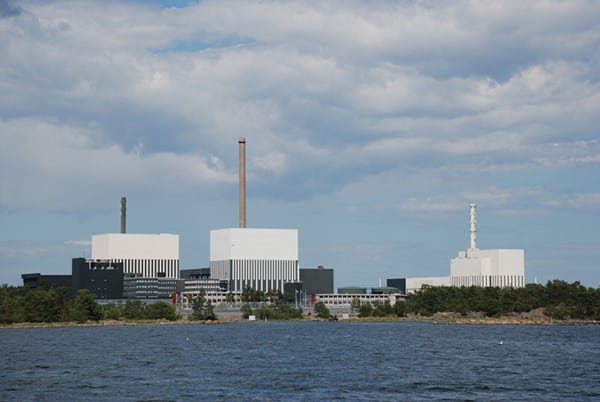More Nuclear Plants Deemed Unprofitable in Sweden, Germany
E.ON in late June announced that it wants to shutter its Oskarshamn 2 reactor (Figure 1) in southeastern Sweden because it is unprofitable. The announcement is the latest in a string of early nuclear plant retirements from around the world.
The German company wants to shutter the 1974-built reactor instead of installing upgrades to comply with new cooling requirements and extend the 40-year lifetime of the 638-MW plant. It also said the reactor suffers technical problems. “In E.ON’s view, the economic prerequisites for investments to run Oskarshamn 2 beyond 2020 do not exist, and… the prerequisites do not exist either for the measures that would be required to continue operations until 2020,” E.ON Sweden said in a statement.
E.ON owns 55% of plant operator OKG. Finland’s Fortum owns the remainder. OKG in June applied for an environmental court ruling in preparation for the future decommissioning of the 1972-built Oskarshamn 1. The 1985-built, 1,400-MW, Oskarshamn 3 reactor is expected to continue operations. However, Fortum said in a statement that it would prefer the continued operation of the two older Oskarshamn units.
“Contrary to EON’s view, we believe that it is possible to continue production from Oskarshamn units 1 and 2 until the end of their planned operational lifetimes,” said Fortum’s executive vice president for nuclear and thermal power, Tiina Tuomela. Fortum said that recent modernization investments in the reactor had been carried out with a target to continue production until the end of the unit’s lifetime and with increased capacity. “Considering the investments made, as well as our strong expertise as a nuclear operator and a global service provider, we see that there are other measures [that could be] taken to ensure safe and reliable production at Oskarshamn 2 till the end of its planned lifetime,” Tuomela said.
Industry experts expect OKG to make a formal decision on the reactor’s fate later this year.
E.ON’s announcement comes as Sweden contemplates the role of its 10 reactors and three nuclear plants in its future power mix. Social Democrat Prime Minister Stefan Löfven had said that nuclear, which generated about 40% of the country’s power in 2013, remains necessary, but he has also pledged to expand renewable energy in the country. Last December, meanwhile, Sweden decided to nearly double fees paid by utilities into the country’s nuclear waste fund over the 2015–2017 period. The move increased taxes on nuclear power from US$0.29/kWh in 2014 to $0.49/kWh.
E.ON, which in April announced it would spin off all its nuclear assets owing to Germany’s energy transition, in late June also said it would retire the 1.3-GW Grafenrheinfeld nuclear power plant half a year ahead of its final decommissioning date because it is not profitable. Running the 33-year-old reactor would only make sense if it could be operated for a longer period of time and without a nuclear tax costing about $89 million to refuel the plant, E.ON said. Grafenrheinfeld is the first of nine remaining German reactors that will retire per the country’s nuclear phase-out. The next closures will occur by the end of 2017 and 2019.
E.ON isn’t alone. Earlier this year, Swedish state-owned Vattenfall said it would shutter two reactors at its 1975-built Ringhals plant in southwestern Sweden seven years early due to declining profitability and increased costs.
In the U.S., reactors at five plants were shuttered or slated for shutdown in 2013 owing to low demand, depressed wholesale prices, cheap gas, high costs of operation, or ill-fated repair projects: Dominion Resource’s Kewaunee nuclear plant in Wisconsin, Duke Energy’s Crystal River plant in Florida, Southern California Edison’s San Onofre Nuclear Generating Station, and Entergy’s Vermont Yankee plant. Several more are flailing financially, including Exelon’s New York Ginna facility and its Illinois Clinton facility; Entergy’s Massachusetts Pilgrim facility; and FirstEnergy’s Ohio Davis-Besse facility.
—Sonal Patel is a POWER associate editor.
